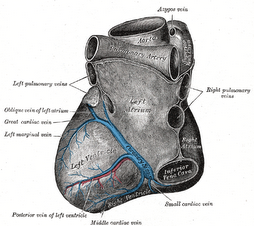
Characteristics
Patients with Atrial Septal Defects may have Atrial Fibrillation, Atrial Tachycardia, or Atrial Flutter, but these arrythmias are not usually seen until patients grow older. Features also seen on the EKG include Right Atrial Enlargement, PR prolongation and advanced AV block. When you suspect a patient has an ASD based on the findings of an incomplete Right Bundle Branch Block with a rSr' or rSR' the next thing you should do is examine the frontal plane QRS. The frontal plane QRS is the most helpful clue to help you differentiate Secundum ASD from Primum ASD. In Primum defects left axis deviation is seen in most patients with an axis of > -30 degrees and very few patients have right axis deviation. In contrast Secundum defects have an axis between 0 degrees and 180 degrees with most cases to the right of 100 degrees.
In the EKG above, you can see an example of the rSR' pattern in V1 with a R' greater than S with T wave inversion which is commonly seen in volume overload. See www.askdrwiki.com for more interesting EKGs
References
Pryor R, Woodwork MB, Blount SG: Electrocardiographic Changes in Atrial Septal Defects:Ostium Secundum versus Ostium Primum defect. Am Heart J 58:689, 1959.


No comments:
Post a Comment